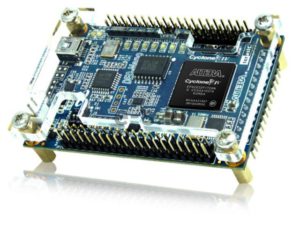Pulse Width Setting Circuitry on PCB Card Reverse Engineer
Pulse Width Setting Circuitry on PCB Card Reverse Engineer
In order to ensure that the pulse signal generated by the projectile passing through the light curtain can be very suitable for the needs of the subsequent processing circuit, in the PCB Card reverse engineer, the pulse signal generated by the projectile passing through the light curtain is changed into a pulse signal with a pulse width of 50 μs and then output to the subsequent circuit.
When PULSE_OUT2 has a positive transition, the output of flip-flop D7 outputs a high level and starts the counter. When the counter is full, the counter cout has a rising edge, and the output of the flip-flop D8 outputs a high level. This high-level signal clears the counter and is inverted by the inverter and then connected to the flip-flops D7 and D8. At the end, the flip-flops D7 and D8 are cleared.

Pulse Width Setting Circuitry on PCB Card Reverse Engineer
The function of the whole circuit is that after the jump edge of PULSE_IN arrives, the anti-shock wave circuit is first passed. If the signal pulse width is greater than 10μs, the anti-mosquito interference circuit is activated; if the signal pulse width is greater than 150μs, the output PULSE_OUT is a low level signal; When the pulse width is less than 150 μs, the pulse width setting circuit becomes a signal output having a width of 50 μs.
Through analysis, it can be seen that the anti-interference circuit reverse engineering from the application FPGA device has the characteristics of flexible adjustment of the pulse width of the flexible adjustment signal, strong adaptability to the pulse width of the input signal, large adjustment range, stable and accurate pulse width and amplitude of the output.

